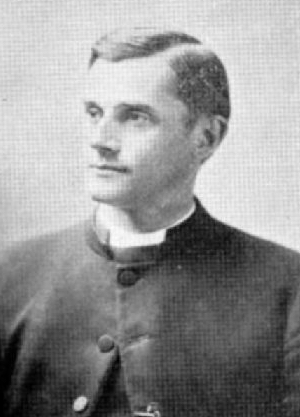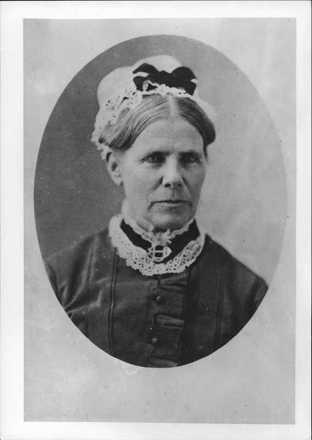The Melanesian Mission is an Anglican missionary agency supporting the work of local Anglican churches in Melanesia. [1] It was founded in 1849 by George Selwyn, the first Bishop of New Zealand. [2]
The Melanesian Mission is an Anglican missionary agency supporting the work of local Anglican churches in Melanesia. [1] It was founded in 1849 by George Selwyn, the first Bishop of New Zealand. [2]
Bishop Selwyn's see was focused on New Zealand. In December 1847 he began a series of voyages to the Pacific Islands, which were included in his diocese by a clerical error in his letters patent. His see should have been defined as lying between 34th and 50th degrees of south latitude. [3] The clerk drafted the boundaries as lying between 34th degrees of north latitude and 50th degrees of south latitude, which include islands to the north of New Zealand. [3] At the time of his appointment, Selwyn was aware of this clerical error, but he chose not to point it out. [3]
His letters and journals of these journeys through Melanesia present the reader with a vivid picture of his versatility, courage, and energy. In 1849 he formed the Melanesian Mission to work in the Western Pacific. [4] [5] [6]
The Undine, a small 21-ton schooner, serviced the mission from 1849 to 1857. In 1854, Selwyn commissioned the construction of a 100-ton schooner, the Southern Cross [7] [8] [9] to service the mission and enlisted John Coleridge Patteson to lead the mission. His voyages and the administrative work resulted in 1861 in the consecration of Patteson as the first Bishop of Melanesia.

In 1867, the Mission established St Barnabas College on Norfolk Island, as a church and training centre for missionaries. [6] The Melanesian Mission established an administrative centre on Mota island in the Banks Islands (now part of Vanuatu) and the Mota language became the lingua franca of the mission. [6]
The missionaries included:
Today it continues to provide financial and staffing support for the Anglican Church of Melanesia, an independent province of the Anglican Communion. [18] Its headquarters are in Feniton, Devon. [19]

John Coleridge Patteson was an English Anglican bishop, missionary to the South Sea Islands, and an accomplished linguist, learning 23 of the islands' more than 1,000 languages.

The Anglican Church of Melanesia (ACoM), also known as the Church of the Province of Melanesia and the Church of Melanesia (COM), is a church of the Anglican Communion and includes nine dioceses in Solomon Islands, Vanuatu and New Caledonia. The Archbishop of Melanesia is Leonard Dawea. He succeeds the retired archbishop George Takeli.

George Augustus Selwyn was the first Anglican Bishop of New Zealand. He was Bishop of New Zealand from 1841 to 1869. His diocese was then subdivided and Selwyn was Metropolitan of New Zealand from 1858 to 1868. Returning to Britain, Selwyn served as Bishop of Lichfield from 1868 to 1878.

Mota is an island in the Banks group of northern Vanuatu. Its population – today about 700 people – speak the Mota language, which Christian missionaries of the Anglican Church used as a lingua franca in parts of Melanesia.
John Manwaring Steward (1874–1937) was the fifth Anglican Bishop of Melanesia, serving from 1919 to 1928. From 1924 he was assisted by Merivale Molyneux as assistant bishop. He was the son of Charles Edward Steward, also an Anglican priest. J.M. Steward was elected Bishop of Melanesia after 17 years of missionary work as a priest in the Melanesian Mission, which he joined in 1902.

Southern Cross is the name given to each of a succession of ships serving the Melanesian Mission of the Anglican Church and the Church of the Province of Melanesia. The first ship having this name succeeded the Undine, a 21-ton schooner built at Auckland and in service from 1849 to 1857.

Cecil Wilson was an English county cricketer and Anglican bishop. He was the third missionary Anglican Bishop of Melanesia from 1894 to 1911, and subsequently, the second Bishop of Bunbury from 1918 to 1937.

Elizabeth Colenso was a missionary, teacher and Bible translator in New Zealand.
The Archbishop of Melanesia is the spiritual head of the Anglican Church of Melanesia, which is a province of the Anglican Communion in the South Pacific region, covering the nations of Solomon Islands and Vanuatu. From 1861 until the inauguration of Church of the Province of Melanesia in 1975, the Bishop of Melanesia was the head of the Diocese of Melanesia.
Mota is an Oceanic language spoken by about 750 people on Mota island, in the Banks Islands of Vanuatu. It is the most conservative Torres–Banks language, and the only one to keep its inherited five-vowel system intact while also preserving most final vowels.
Sydney Gething Caulton was a British bishop who spent much of his career in New Zealand and the South Pacific.

Sir David Okete Vuvuiri Vunagi,, is a retired Solomon Islands Anglican bishop who served as governor-general of Solomon Islands from 2019 to 2024. He was the archbishop of Melanesia and bishop of the Diocese of Central Melanesia from 2009 to 2015.

William Alaha Pwaisiho, is a retired Anglican bishop who served as a bishop of the Anglican Church of Melanesia and then a priest in the Church of England.
The Diocese of Banks and Torres is one of the ten current dioceses of the Anglican Church of Melanesia.
Richard Blundell Comins was an English Anglican priest who worked as a missionary for the Anglican Mission to Melanesia. He became the first Archdeacon of Northern Melanesia in 1900.
Benjamin Yate Ashwell was an Anglican missionary and a member of the Church Missionary Society (CMS) mission in New Zealand in the 19th century. He was missionary to the Māori in the western Waikato region. In 1839 he was sent to Kaitotehe, near Mount Taupiri, where he established the Kaitotehe Mission, with branch missions at Te Awamutu and Otawhao in the valley of the Waipā River.

Riwai Te Ahu (c1821–1866) was a notable New Zealand teacher and missionary. Of Māori descent, he identified with the Ngāti Hinerangi and Ngāti Awa iwi (tribe). He was born in Waitara, Taranaki, New Zealand. He was the son of Tuhoe of Waiongana and Waipuia of Waitara. In 1840 he was baptised by the Rev. Octavius Hadfield at the Waikanae Mission of the Church Missionary Society (CMS).
John Palmer was a priest who worked as a missionary for the Anglican Church in Melanesia.

The Melanesian Mission House is a Tudor Revival former educational building located in Mission Bay, Auckland, New Zealand. Formerly owned by the Anglican Church of New Zealand it is now owned Heritage New Zealand and registered as a category 1 building.